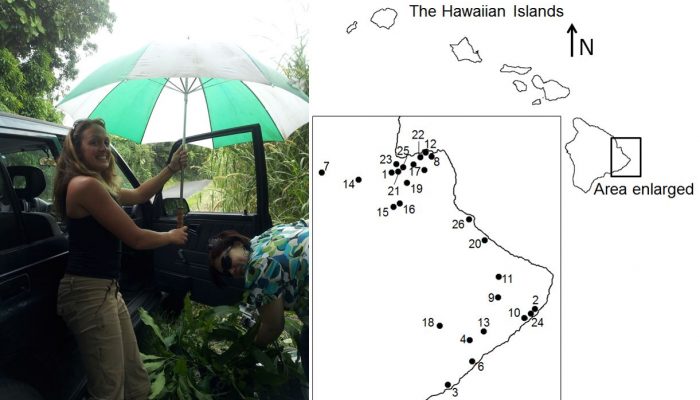About the functional traits approach
Functional traits are a series of measurements that inform the species’ role within a given environment. We looked at a total of 15 functional traits:

Using these traits, we created communities that fostered either slow or moderate carbon turnover rates and to test ecological theory regarding complementary1 or redundant2 trait space. Plant species on the slow end of the spectrum have low rates of resource acquisition and processing, which requires leaf, stem, and root traits that are more conservative and efficient in resource use than plant species on the fast end of the spectrum. Being a slow species is advantageous under low-resource conditions because resource conservation traits enhance survival, but being a slow species can be a drawback under higher-resource conditions since they may be outcompeted by faster species. Fast species were not included because species with trait values at the fast end of the economics spectrum tend to be invasive in Hawaiian lowland wet forests3.
Liko Nā Pilina uses a hybrid forest approach, composing communities of both native plant species and non-invasive introduced species, including canoe plants that were brought to Hawaiʻi by the Polynesians and more recent introductions as well. Visit our native & introduced species page to learn more about our plants.
This project explores four different plot treatments. Select the treatment to see what species were outplanted to make up that community. These are in addition to native species that were left in the plots, namely ʻŌhiʻa lehua (Metrocideros polymorpha), Lama (Diospyros sandwicensis), Kōpiko (Psychotria hawaiiensis), and Kōlea lau nui (Myrsine lessertiana). Select a treatment to learn more about the plant species included within it.
For more information, refer to our module on functional trait-based restoration, or read the 2016 Liko Nā Pilina Report.
- Species with relatively different functional traits make up community ↩︎
- Species with relatively similar functional traits make up community ↩︎
- Ostertag, R., S. Cordell, J. Michaud, T. Colleen Cole, J.R. Schulten, K.M. Publico, and J.H. Enoka. 2009. “Ecosystem and Restoration Consequences of Invasive Woody Species Removal in Hawaiian Lowland Wet Forest.” Ecosystems 12: 503–15.
Zimmerman, N., R.F. Hughes, S. Cordell, P. Hart, H.K. Chang, D. Perez, R.K. Like, and R. Ostertag. 2008. “Patterns of Primary Succession of Native and Introduced Plants in Lowland Wet Forests in Eastern Hawai’i.” Biotropica 40: 277-284. ↩︎







